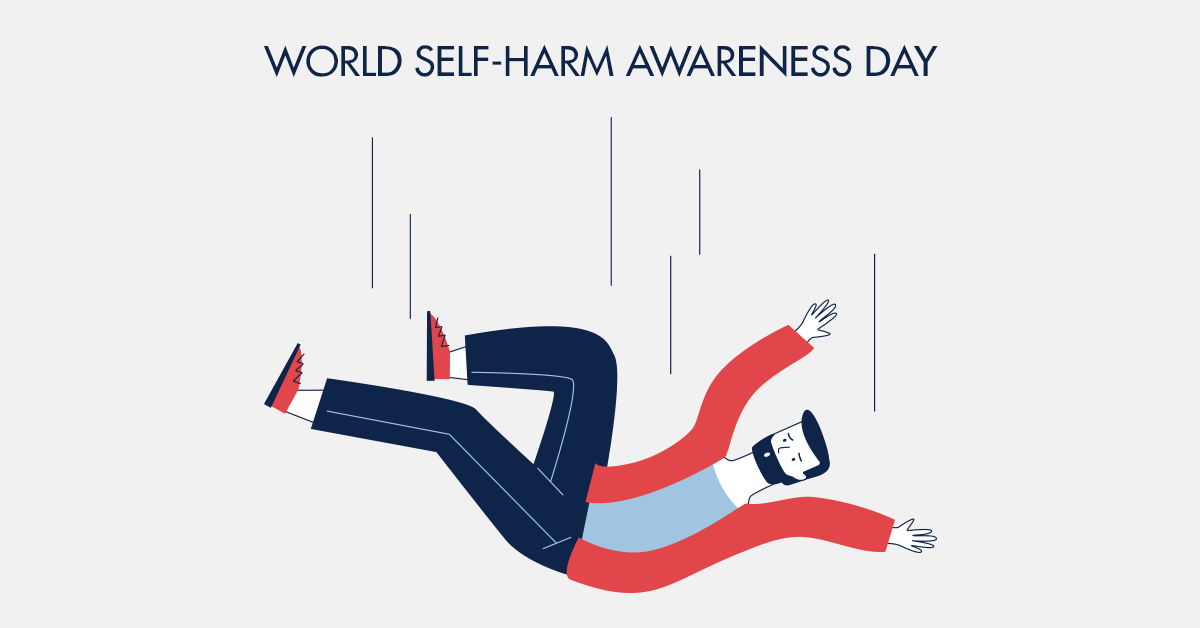Self Harm: Busting Myths

Even though in the last couple of years a lot has been talked about self-harm with a lot of people, especially young, sharing their personal accounts, the reality is that there is so much more that people don’t know about self-harm.
What is self-harm?
Self-harm is an act of deliberately causing harm to one’s body. It is often thought to be synonymous with cutting, however, it also includes self-inflicting burns, self-hitting or bruising, pulling hair out by the roots, picking at wounds or scratching, and can even be as extreme as intentionally breaking a bone or overdosing on a medicine.
Why do people self-harm?
Formerly called Non-Suicidal Self Injury or NSSI, self-harm is usually an extreme way of dealing with stress. People who self-harm commonly report that they feel empty inside, are unable to express feelings, or not understood by others. Unfortunately, the release of emotion that self-harm offers is short-lived and usually immediately followed by feelings of guilt and shame. This can create a cycle of self-harm.
Some common triggers of self-harm
The reason a person might self-harm can vary each time. Usually, it is to feel relief from intense emotions like:
If you have a history of self-harming or know someone who does, Regency offers a safe environment and professional treatments. Consult Today!
- sadness
- anxiety
- frustration
- anger or rage
When emotions are that intense, self-harm may feel like it decreases the intensity of your emotions to a more bearable level. Some more triggers that lead to self-harm are:
- To punish themselves because they think they deserve the pain
- Stop suicidal thoughts
- Feel in control
- Express internal feelings in an external way
Myths surrounding self-harm
Despite the work that has been done to generate awareness around self-harm, there are still a lot of stigmas and myths surrounding it.
- Self-Harm is a suicide attempt
In most cases, self-harm is not a rehearsal for a suicide attempt. On the contrary, it is a coping mechanism. People use self-harm to stay alive rather than kill themselves. However, that doesn’t mean that people who engage in self-harm cannot become suicidal in the future.
- Self-Harm is attention-seeking
The truth is self-harm is often done in secret and most of them go to great lengths to draw as little attention as possible. They harm parts of the body that are not visible to others.
- Self-Harm is accompanied by other Mental Health problems
Self-harm is a behavior or a symptom, not an illness or disorder. It is true that many people who show this behavior might have an underlying psychological or emotional problem. However, many people who self-harm do not meet the criteria for any specific mental illness diagnosis.
Tips to support someone who self harms or self-care
Raising the topic of self-harm can often bring in feelings of fear, guilt or shame, therefore a lot of people who self-harm don’t ever tell anybody about this behavior. However, if you are someone who self-harms or know someone who does it, there are a few things you can do to help reduce the urges.
- Recognize the triggers
These can include people, situations, dates, time of the day, thoughts or feelings. Keep a track of what was the trigger that led to self-harm in a diary. Writing down about them might help you to become better equipped the next time.
- Practice Positive Coping Mechanisms
Take deep breaths, take a bath or try meditation. Use a punching bag, exercise or scream into a pillow. Write about how you feel or write creatively. Paint, draw or craft. Listen to your favorite song or play an instrument. Run, dance or just go for a walk.
- Look after yourself
Doing light regular physical activity can boost your mood and reduce stress. Spend time every week doing things that you enjoy, like seeing friends or going for a walk. Try to make time regardless of what else is going on. Get enough sleep. Eat regular, healthy meals.
- Find ‘substitutes’ to self-harm
Remember to give yourself time to overcome this behavior and try to create other ways to get over these urges. Wait ten minutes before self-harming. If it works, try delaying for half an hour, an hour, a morning, a day, a week. Try to distract yourself by tidying up, tearing things up, or throwing things out. Draw on your arm instead of cutting, or flick elastic bands on your wrists. Smell something with a strong odour.
- Seek Treatment
If you are having difficulty coping with intense emotions without the use of self-harm, consider talking with a mental health professional.
Regency has diagnostic and therapeutic facilities manned by highly skilled and experienced doctors. Contact for more information.

 Call-an-Ambulance
Call-an-Ambulance



